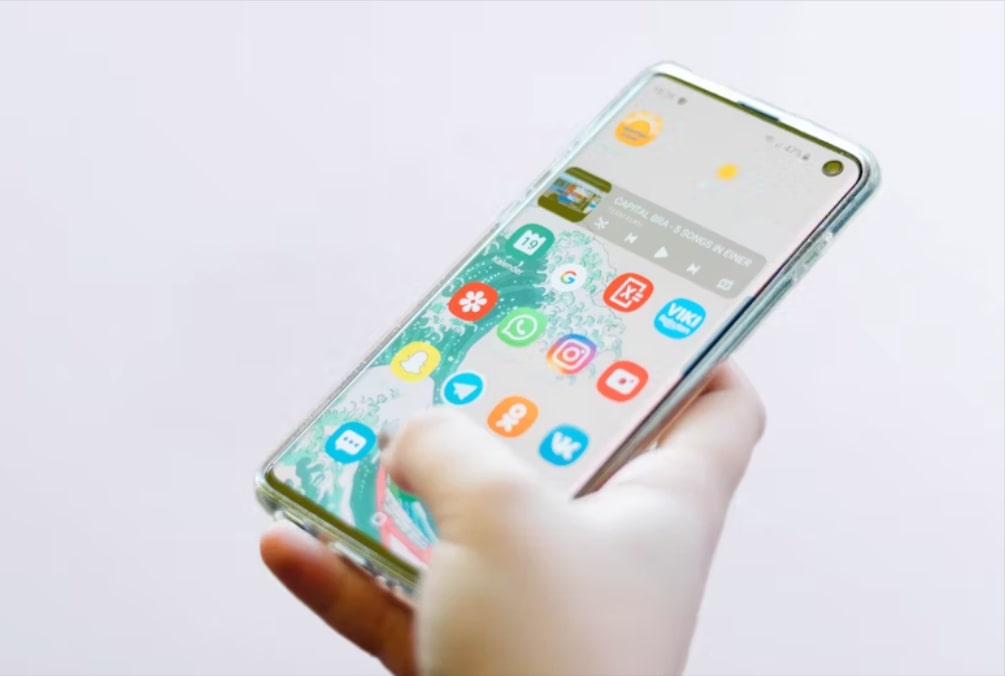DIGITAL LIFE

Engineers transform smartphones into instruments for studying space
That ordinary smartphone in your pocket could be a powerful tool for investigating outer space. In a new study, researchers at Google and CU Boulder have transformed millions of Android phones across the globe into a fleet of nimble scientific instruments—generating one of the most detailed maps to date of the uppermost layer of Earth's atmosphere.
The group's findings, published Nov. 13 in the journal Nature, might help to improve the accuracy of GPS technology worldwide several-fold. The research was led by Brian Williams of Google Research and included Jade Morton, professor in the Ann and H.J. Smead Department of Aerospace Engineering Sciences at CU Boulder.
"These phones can literally fit in your palm," Morton said. "But through crowdsourcing, we can use them to change the way we understand the space environment."
She and her colleagues used the GPS sensors that come standard in every smartphone to collect data on how Earth's atmosphere warped signals coming from satellites. In the process, they were able to view phenomena in the atmosphere, such as blobs high above the planet known as "plasma bubbles," in never-before-seen detail.
The group released its data publicly so that anyone can watch how the atmosphere swirled and shifted over about eight months. "Collaboration is central to scientific progress and to our scientific research at Google," said Lizzie Dorfman, product lead for Science AI in Google Research. "Dr. Morton's expertise was essential to this research, and it has been an absolute pleasure working with her as a visiting researcher and collaborator."
Eye on the ionosphere...The study puts new focus on the ionosphere, a wispy layer of the atmosphere that stretches more than 350 miles above Earth's surface.
It's a volatile arena: Here, rays from the sun constantly beat down on the atmosphere, splitting its molecules and atoms into a soupy mix of charged particles—what scientists call a plasma. It also never stays still.
"At 2 o'clock in afternoon, there are a lot more charged particles in the ionosphere because the sun is at its strongest," Morton said. "But at night, the sun is on the other side of the planet, so we have very few charged particles."
That fluctuation can play havoc with GPS technology.
Morton explained that the technology works through a sort of stopwatch in space: Satellites thousands of miles from Earth first beam radio waves to the planet. Your phone then pinpoints your location by measuring how long it takes those signals to reach the ground.
Scientists try to account for how the ionosphere might shift that timing by mapping this region of space using radar dishes on the ground. Currently, however, they can only observe about 14% of the ionosphere at any one time. As a result, GPS devices may miss your exact location by anywhere from a few to several dozen feet.
"There are a lot of applications that require a lot of accuracy—for example, landing aircraft," Morton said.
Map generated from 10 minutes of cellphone data showing the concentration of charged particles overlying different parts of the worldBubbling up...In the current study, the researchers landed on an unusual idea: Rather than rely on expensive radar dishes, they could map the ionosphere using a suite of sensors that already existed in every country on Earth: Android phones.
The ionosphere maps are created using aggregated measurements of the radio signals between satellites and the receivers in some Android devices. Privacy protections ensure these measurements do not identify any contributing individual devices.
In particular, the group used the phones to track in real time how the ionosphere stretches out radio waves coming from satellites.
The team reported that, on its own, this worldwide fleet could observe roughly 21% of the ionosphere—potentially doubling the accuracy of GPS devices worldwide.
"Millions of phones together can do a much better job of monitoring the atmosphere than our ground network," Morton said.
The group's maps also capture the ionosphere in brilliant detail.
In May 2024, for example, a powerful solar storm struck Earth just as the group's cell phones were looking up. In the hours that followed, huge regions of atmosphere, or "plasma bubbles," containing low concentrations of charged particles formed above parts of South America. Those bubbles then rose through the ionosphere like wax in a lava lamp.
Morton, for her part, says the study shows the untapped potential of the everyday technologies that many people take for granted.
"I have spent my lifetime building dedicated instruments to do scientific research," Morton said. "But as technology advances in our society, we see all these sensors at our disposal that have a lot more power than we ever imagined."
Provided by University of Colorado at Boulder


No comments:
Post a Comment